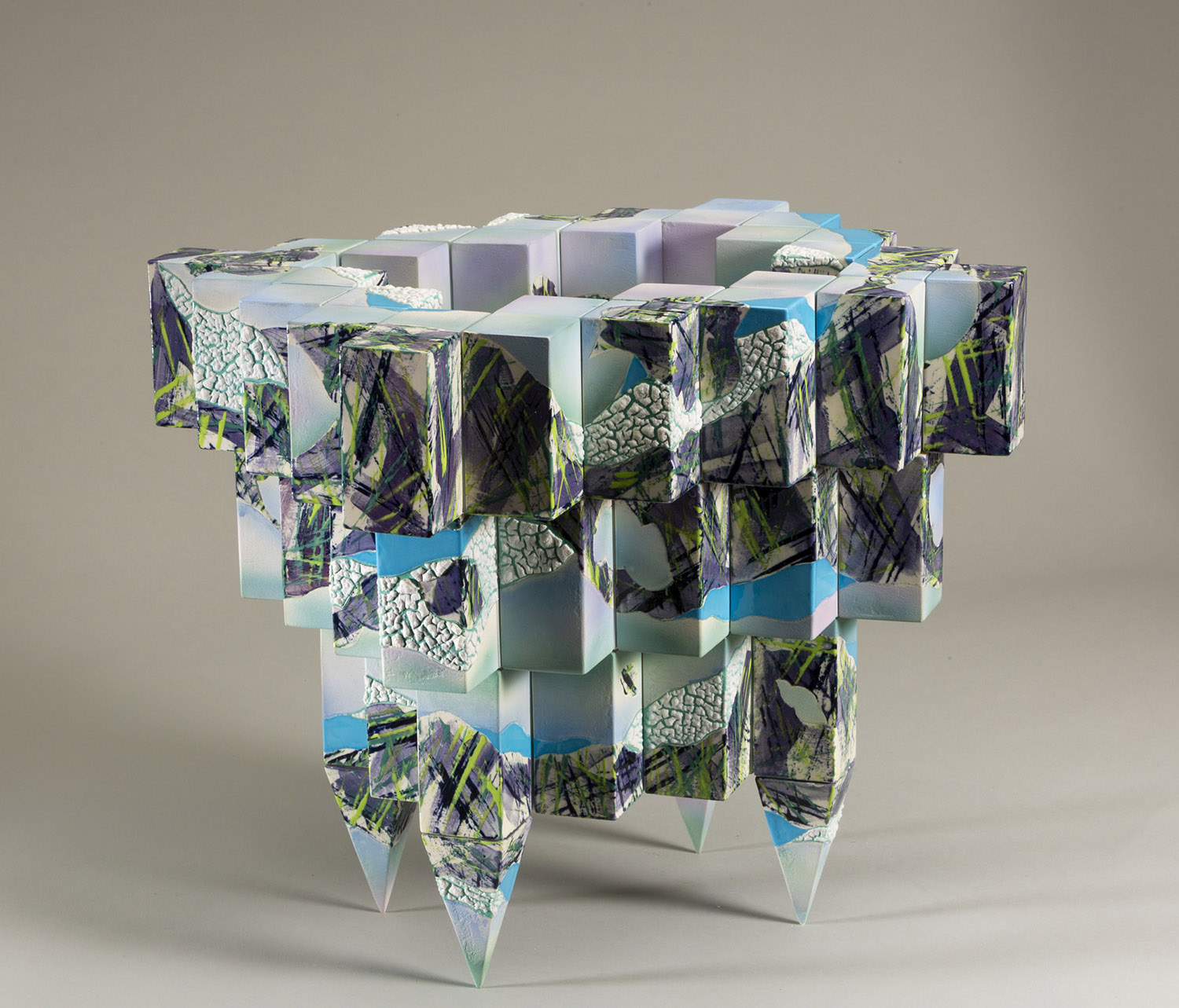Itsue Ito (b.1956) is a contemporary Japanese ceramist known for her experimental approach to traditional Japanese stoneware. She began her study of ceramics and sculpture in the 1970s and 1980s. In 1979, she graduated with a BFA in Ceramics from Osaka University of Arts having studied under Yanagihara Mutsuo. Ito continued her education in the United States, completing her MFA at Minnesota State University (1981) and Louisiana State University (1983). In artist statements and interviews, Ito states that her study in the United States opened more avenues for experimentation in clay. Ito’s artwork from her graduate studies incorporated fresh ideas and expressions separate from traditional Japanese ceramics.
In 1988, Ito returned to Miyazaki, Japan to establish the Clay Works Atelier. Her works from the 1980s through the present show her interest in the symbiotic relationship between humans and nature. Ito writes on her studio’s website, “My work is heavily influenced by nature’s distinct four seasons as well as the geography and weather of Japan.” Ito believes that clay is the best media to engage with these themes, as “clay is one of the few natural resources Japan harbors.” Particularly, Ito enjoys the rough texture, fluidity, and muted palette that raw clay provides. After shaping and molding her forms, she uses colorful glazes to express her creative and expressive interpretation of the natural world. Ito’s artwork is less interested in functionality and more so in the artistry of the medium.
Shu To embodies Ito’s interest in natural forms and artistry. This sculpture is comprised of rectangular blocks joined to create the effects of an inverted mountain-scape. There is an empty space in the middle of the work, which Ito calls the “container.” This void implies the shape of valleys and hills. Ito glazed the work in a range of pastel colors in light tones, mainly whites, blues, greens, and pinks. Some of the surface has a smooth finish while other sections have a rough, crackled exterior. Other portions of the artwork have purple and black glazes abstractly applied to the surface, suggesting the visual tradition of Abstract Expressionist painting. Ito stated that this work expressed her rumination on the original landscape of Japan. The colors bring to mind the beginning of spring as flowers bloom along hillsides, while the shape evokes the natural mountains and valleys of Japan’s terrain. The abstract sections and crackled surfaces imply the hazy morning atmosphere that one would experience in the Japanese highlands.
In the 1990s, Ito also studied in the Netherlands, where she further realized the power for ceramics to engage with community. Her current ceramic practice involves open studio hours for the community to dabble with coil and slab style ceramics.
-Tyler Valera, Curatorial Intern
Image caption: Itsue Ito, Shu To, 1986, earthenware, 15 x 18 x 19 inches, Everson Museum of Art; Purchase Prize given by the Hancock Foundation, 27th Ceramic National, 1987, 87.37.5.
Sources:
- “Featured Artist: Itsue ITO., Japanese ceramist” Ceramics Today. http://ceramicstoday.glazy.org/potw/ito.html.
- Heller, Dulcey. “Raku Artist Itsue Ito.” American Craft Council. Published January 7, 2016. https://www.craftcouncil.org/post/raku-artist-itsue-ito.
- Ito, Itsue. “Clayworks Atelier – Artist Website.” Clayworks Atelier Itsue Ito. 2019. https://www.itsueito.com/.
- Ito, Itsue. Universe: Ceramics. Mankato, MN: Mankato State University, 1981.
- “Itsue Ito.” Galerijos Padaliniai. 2012. http://sena.arspanevezys.lt/index.php/itsue-ito-en#page.


